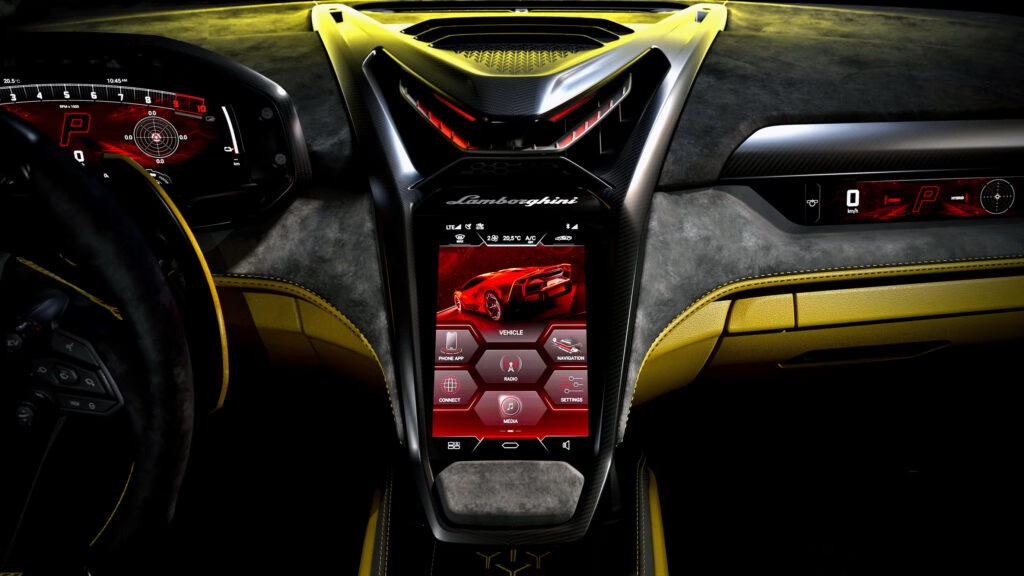How is Lamborghini using AI to personalize the driving experience?
Imagine sliding behind the wheel of a Lamborghini that doesn’t just respond to your inputs—it actually learns from you. That’s exactly where the Italian supercar maker is headed, thanks to a suite of artificial intelligence features that promise to make every drive feel tailor-made. Lamborghini’s latest advancements let the car analyze your driving style, sense the road beneath you, and even pick up on your mood. The result? Pure magic. The car adapts in real time, tweaking everything from torque distribution to steering response, so you’re always getting the most out of every twist and turn.
What does machine learning mean for torque and handling?
Let’s break it down. Lamborghini’s chief technology officer, Rouven Mohr, recently revealed that the company is leveraging machine learning to manage torque—essentially, how power is sent to each wheel. The system doesn’t just react to road conditions like rain or gravel; it studies how you drive. If you’re a skilled driver, the car might loosen up its electronic safety nets, letting you push the limits a bit more. On the flip side, if you tend to oversteer or understeer, the AI quietly steps in, making subtle corrections to help you handle corners with more confidence.
This isn’t just theory. Mohr shared a real-world example: if the car notices you’re consistently using too much steering angle in corners (a classic sign of understeer), it can adjust the steering system so you’re less likely to repeat the mistake. It’s like having a silent co-pilot who knows your habits—and helps you improve.
Can a Lamborghini really sense your mood and intentions?
It sounds like science fiction, but Lamborghini is already exploring ways to make this a reality. Future systems could use driver monitoring tech—think cameras and sensors that read facial expressions or body language—to figure out what kind of experience you want. Are you in the mood for a spirited, sideways blast through the mountains? Or do you just want a calm, composed cruise home after a long day? The AI could pick up on these cues and adjust the car’s behavior accordingly, from throttle response to how much the rear end is allowed to slide.
This approach isn’t just about fun. There’s a safety angle, too. If the system senses you’re tired or distracted, it could dial back the aggression, making the car more stable and less likely to surprise you. It’s a new kind of partnership between driver and machine, where the car is always looking out for you—even when you’re not at your best.
What’s the deal with Lamborghini’s new 6D sensor?
At the heart of these innovations is a piece of hardware that sounds straight out of a racing lab: the 6D sensor. Debuting in the limited-run Fenomeno, this sensor captures data across all three axes of motion—plus pitch, roll, and yaw. For those keeping score, that’s the same kind of tech used in high-end motorcycles and race cars to keep things glued to the road.
Why does this matter? With this level of detail, the car’s brain can make split-second decisions about how to distribute power, adjust suspension, or even tweak the steering. It’s not just about raw speed; it’s about making the car feel like an extension of your own instincts. According to Mohr, this is the “door opener for the future”—a foundation for even smarter, more responsive supercars.
How does this technology compare to what’s already out there?
Adaptive handling and torque vectoring aren’t new concepts—many performance cars offer some version of them. What sets Lamborghini’s approach apart is the depth of personalization. Instead of relying on preset modes (like “Sport” or “Comfort”), the AI builds a profile of you as a driver. Over time, the car gets better at predicting what you want, when you want it. It’s a bit like how your smartphone learns your habits, only with a lot more horsepower.
Other automakers are dabbling in similar territory, but Lamborghini’s integration of mood-sensing and real-time learning is pushing the envelope. Industry analysts see this as a natural evolution, especially as cars become more connected and software-driven. According to a 2023 report from McKinsey & Company, nearly 40% of new vehicles sold globally by 2030 will feature some form of advanced driver personalization—a trend Lamborghini is clearly embracing.
What could this mean for the future of high-performance driving?
There’s a bigger picture here. As supercars get faster and more complex, the challenge isn’t just about building more power—it’s about making that power accessible and enjoyable for a wider range of drivers. By blending AI, advanced sensors, and driver monitoring, Lamborghini is aiming to democratize the thrill of high-performance driving. You don’t have to be a professional racer to get the most out of your car; the car helps you get there.
And let’s be honest: for most of us, the idea of a car that adapts to our mood or skill level is pretty appealing. It’s a step toward a future where technology doesn’t just add complexity—it adds real value, making every drive safer, more engaging, and more personal.
The big takeaway? Next-gen Lamborghinis aren’t about perfection—they’re about smarter adjustments. Start with one change this week, and you’ll likely spot the difference by month’s end.

